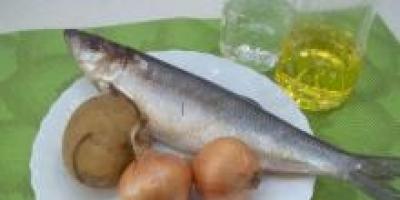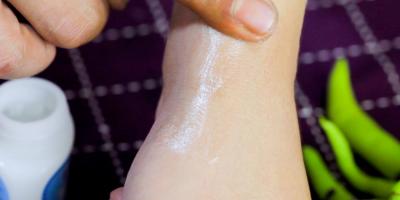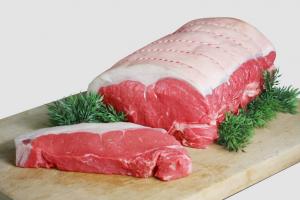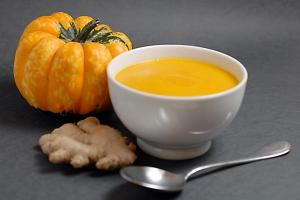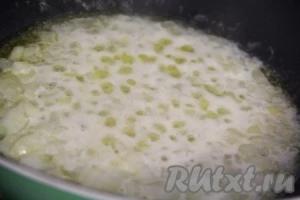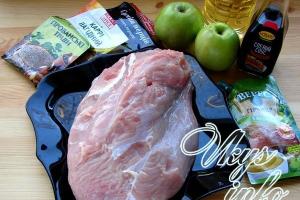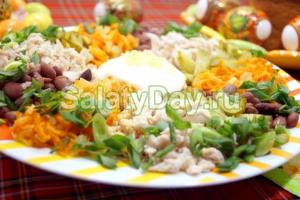Very soon bright holiday Easter, so I want to offer you great recipe the most delicious Easter cakes. This cooking method involves dough, but despite this, everything is done very quickly and easily. I have already tried many recipes to find delicious dough for Easter cakes, but each of them had its own shortcomings, and regarding this, I can say that I like it the most.
I’ll also show you the easiest way to decorate Easter cakes and make it quick and tasty. You can use your own design option for them, it depends on your imagination and desire. To make Easter cakes at home, you can use either fresh or dry yeast, I have the first option and I take 15 grams of it; if you make it with dry fast-acting yeast, you only need 5 grams.
Below I will tell you in detail how to prepare and bake Easter cakes so that they turn out delicious and you can treat them to your family and friends. Also look at the one I made last year, you don’t even need to knead the dough for them.
Opara:
- Wheat flour – 85 g
- Cream 33% - 120 ml.
- Pressed yeast – 15 g
- Sugar – 2 tsp
Dough:
- Chicken egg – 2 pcs.
- Egg yolk – 1 pc.
- Sugar – 110 g
- Salt - a pinch
- Flour – 270 g
- Butter – 50 g
- Candied fruits – 90 g
Glaze:
- Egg white – 1 pc.
- Powdered sugar – 100 g
- Lemon juice – 3 drops
How to bake Easter cake at home
First thing I do is cook butter dough for Easter cakes, or rather, dough for him. I warm the cream slightly so that it becomes warm, not hot. The cream should be 33% fat or more, this affects the taste. I add fresh pressed yeast to them and mix until smooth. It is very important for happy baking take high-quality yeast, and as fresh as possible.
 Next, add 2 tsp of sugar and 85 grams of flour to the cream. I make sure to sift the flour in advance to break up any lumps and saturate it with oxygen.
Next, add 2 tsp of sugar and 85 grams of flour to the cream. I make sure to sift the flour in advance to break up any lumps and saturate it with oxygen.
 I mix everything and the dough is ready. Now I cover it with a clean kitchen towel and put it in a warm place for 30 - 40 minutes or until the mass has at least doubled. I put it on the table next to the radiator, it’s very warm there.
I mix everything and the dough is ready. Now I cover it with a clean kitchen towel and put it in a warm place for 30 - 40 minutes or until the mass has at least doubled. I put it on the table next to the radiator, it’s very warm there.
 After some time, the dough has increased and now you can prepare the rest of the dough.
After some time, the dough has increased and now you can prepare the rest of the dough.
 I beat the eggs into a mixer container and add sugar. I beat all this with a mixer at high speed until the sugar dissolves.
I beat the eggs into a mixer container and add sugar. I beat all this with a mixer at high speed until the sugar dissolves.
 Next, I add the dough to the fluffy egg mass. And instead of whisk attachments, I insert dough attachments into the mixer. And at the lowest speed I begin to mix them until smooth.
Next, I add the dough to the fluffy egg mass. And instead of whisk attachments, I insert dough attachments into the mixer. And at the lowest speed I begin to mix them until smooth.
 Then add salt and add flour little by little. I continue kneading the dough with the mixer in the same way. This entire process can be done by hand, if desired.
Then add salt and add flour little by little. I continue kneading the dough with the mixer in the same way. This entire process can be done by hand, if desired.
 When almost all the flour has been added, I pour in the melted butter and the already cooled, or just soft, room temperature butter. I mix it in again, add the rest of the flour and finish the kneading. It is important not to overfill the dough with flour so that it remains soft, so do not add more than specified. As a result, the dough lags well behind the walls of the dish, although it still seems a little sticky.
When almost all the flour has been added, I pour in the melted butter and the already cooled, or just soft, room temperature butter. I mix it in again, add the rest of the flour and finish the kneading. It is important not to overfill the dough with flour so that it remains soft, so do not add more than specified. As a result, the dough lags well behind the walls of the dish, although it still seems a little sticky.
 I leave it to rise for an hour - an hour and a half, in a warm place, covered with a towel, until it doubles in volume - three times. When it’s ready, I add candied fruits, other dried fruits or even nuts.
I leave it to rise for an hour - an hour and a half, in a warm place, covered with a towel, until it doubles in volume - three times. When it’s ready, I add candied fruits, other dried fruits or even nuts.
 I knead the dough and it is ready, you can start forming the Easter cakes.
I knead the dough and it is ready, you can start forming the Easter cakes.
 Baking Easter cakes at home is the easiest process after lengthy preparation. I use paper forms for baking Easter cakes, but you can use absolutely any, depending on what you have at home. There is no need to grease paper molds with anything. I divide it into three parts, form a ball from each piece, put it in molds and send it to a preheated oven at 180 degrees for 30 minutes.
Baking Easter cakes at home is the easiest process after lengthy preparation. I use paper forms for baking Easter cakes, but you can use absolutely any, depending on what you have at home. There is no need to grease paper molds with anything. I divide it into three parts, form a ball from each piece, put it in molds and send it to a preheated oven at 180 degrees for 30 minutes.
 And this time you can make fudge for Easter cake, for her I put the remaining one protein in a bowl, add powdered sugar and a couple of drops lemon juice. I beat it all with a mixer for just a couple of minutes until the powder dissolves, at the lowest speed.
And this time you can make fudge for Easter cake, for her I put the remaining one protein in a bowl, add powdered sugar and a couple of drops lemon juice. I beat it all with a mixer for just a couple of minutes until the powder dissolves, at the lowest speed.
 I check the finished cakes with a wooden skewer to see how baked the dough is. Next, I cover the cakes with glaze and sprinkle with confectionery sprinkles. This cake fudge recipe is super easy and quick.
I check the finished cakes with a wooden skewer to see how baked the dough is. Next, I cover the cakes with glaze and sprinkle with confectionery sprinkles. This cake fudge recipe is super easy and quick.
 Here is the recipe for the most delicious Easter cakes and I hope you find it useful. Prepare for your health!
Here is the recipe for the most delicious Easter cakes and I hope you find it useful. Prepare for your health!
Dough
Heat the cream to a temperature of 30 degrees, dilute the yeast in it, add 2.5 cups of flour and place the dough in a warm place. While it is rising, mash the yolks with sugar, add the mashed butter. Wash the raisins and dry with a napkin. When the dough is ready, add mashed yolks, raisins, finely chopped nuts and candied fruits. Mix everything well, add the remaining flour, vanilla sugar, wine and thoroughly knead the dough and place in a warm place to rise for 1 hour. When the dough has doubled in volume, punch it down and put it back in a warm place to rise. Ready dough Place 1/3 of the way into a mold, greased with oil and lined the bottom and sides with paper, leave for 1 hour to proof. After this, bake the cake in the oven at 200 degrees for 60-70 minutes. Cool the cake before soaking and decorating with glaze.
Impregnation:
Heat the wine to a boil, add sugar, wait until it dissolves, boil for 10-15 minutes. Then remove from the stove and cool. In principle, you can replace the impregnation with your favorite syrup, if desired. Just thanks to the wine impregnation, it does not go stale longer, and men like it too))) On the dish on which the cake will be served, pour about 1/3 of the impregnation and place the cake. We take a regular medical syringe (not insulin) with a long needle, fill it with impregnation and soak the entire perimeter of the cake so that it gets inside as deeply as possible. It is not necessary to use all the impregnation; take as much as you think is needed.
Glaze:
Cool the whites (just while we are fiddling with the Easter cake, they are in the refrigerator). Then beat at high speed with a mixer until stiff peaks form and begin to gradually add sugar until the flavor composition is acceptable to you. But!!! After adding sugar and beating, the whites should not fall from the inverted spoon, that is, they will have a thick consistency. Therefore, at least 1/2 cup of sugar, I use 1 cup. Beat, apply a thick layer onto the soaked Easter cake with a special spatula or spoon. Decorate with raisins, dried apricots, nuts. We leave it overnight to dry (my mother manages to dry it in the oven, I’ve never tried it), naturally, without covering it with anything.
ROYAL EASTER
We take:
1 liter of cream (fat content 33-35%)
4 cups sour cream
10 eggs
1 cup sugar
100 g shelled nuts
100 g candied fruits
lemon or orange zest
vanillin
We do:
Beat eggs with sour cream, dilute with cream, mix well, pour into a saucepan and boil, stirring constantly. When the whey appears, pour it into a linen napkin (or gauze), put it in a cool place and let the whey drain. Then transfer to a bowl, add sugar, vanillin and mix thoroughly. Then add crushed nuts, finely chopped candied fruits, lemon or orange zest. Place the prepared cottage cheese in a mold, compact it tightly, cover the top with a cutting board, press down with a weight and place in a cold place for 10-12 hours. Then carefully remove the mold from the finished Easter and place it on a dish. Decorate as desired.
Today we will bake with you very tender and fragrant Easter cakes with cream. The recipe will be step by step with photos (as always), so baking a delicious Easter treat will not be difficult. There are already recipes for this on my blog traditional baking that I shared last year: this, and. You can follow the links and see photos and descriptions of the processes. All recipes are successful, time-tested and generations-tested!

Recipe for delicious Easter cake with heavy cream:
For the dough:
- Wheat flour - 170 gr.
- Warm cream - 240 ml. (fat content of cream from 20% and above)
- Fresh yeast - 30 grams (can be replaced with 11 grams of dry yeast, this is a small standard bag)
- Sugar - 2 teaspoons

For the test:
- Prepared dough
- Chicken eggs - 4 pcs + 1 yolk (save the white of one egg for Easter glaze)
- Sugar - 220 grams
- Salt - a pinch
- Butter at room temperature - 100 grams
- Flour - 550 grams
- Candied fruits/dried fruits/nuts – 150 grams

For Easter icing:
- White of one egg - 1 pc.
- Powdered sugar - 100 grams
- Lemon juice - a few drops
How to cook:
First we need to heat the cream (240 ml) until warm, not hot! In hot cream, the yeast will die, and the cake idea will be doomed to failure. Add yeast to the cream.
The yeast needs to be broken into small pieces before adding to the cream, at the same time check its quality: it should not be sticky and slippery, it should break well, and have a pleasant smell. If you decide to use dry yeast, do the same: place the contents of the sachet (11 g) in warm cream and stir. 
Stir the cream, sugar and yeast until smooth and pour this liquid into the sifted flour (170 g). 
The result is a thick, viscous dough.
Cover it with a cotton towel and leave it in a warm, draft-free place. If the kitchen is very warm at the moment, you can leave a bowl of dough right on the table. 
The dough should double in size. This will take 20-30 minutes. The rising time of the dough directly depends on the quality of the yeast and the temperature in the room. 
Next, in a bowl, mix 4 eggs completely and one yolk, a pinch of salt, sugar and beat until fluffy. We keep the white of one egg for Easter icing. 
The egg-sugar mixture should lighten.

Add the appropriate dough to the beaten eggs. 
Now we will add flour, not all at once, but in parts. We will need approximately 550 gr. flour.

You may need a little more or a little less (depending on the size of the eggs used and the quality of the flour). Flour should be added in parts so as not to clog the dough: if this happens, the cakes will be dense and tasteless.
When all the flour is mixed into the dough, add room temperature butter. The butter should be softened (to achieve this, leave it on the table or warm it up a little in the microwave).

Finally, add the remaining flour and knead the dough for 30 minutes. This can be done by hand, in a bread machine, or using a stand mixer. Do it in your usual way!

The finished dough should easily come away from the sides of the bowl. The dough turns out soft, elastic, but at the same time does not stick to your hands.
Tighten the bowl with dough cling film(or cover with a towel) and leave in a warm place without drafts for about 1.5-2 hours. The dough should increase in volume at least 2 times.

Look at the photo how well the dough came together: it is very fluffy and tender. We knead the dough, and at this stage you can optionally add 150 grams of candied fruits, nuts, and raisins. You can use zest from citrus fruits (lemon, lime, orange). This time I decided not to add anything, but to bake a delicious creamy cake so that other ingredients would not interrupt the taste of the cake itself.

After the yeast dough has been kneaded well, cover it again and let it rise a second time. Now it will take much less time to rise the dough than the first time; in about 20-30 minutes it will increase 2-3 times.

Let's start forming the cakes. For baking, it is convenient to use special paper or metal cake pans. Metal ones need to be lubricated butter and sprinkle with flour; there is no need to grease paper forms.

Fill the baking pans 1/3 full. To do this, break off a small piece from the total volume of dough, form it into a ball and place it in the molds with the pinch down. Cover the formed cakes with a towel and leave them in a warm, draft-free place to prove.

After proofing, the Easter cake dough should fill the molds 2/3 full.

Place the Easter cakes in an oven preheated to 180 C. Small cakes will bake for 30-40 minutes, large ones for 50-60 minutes. Baking time directly depends on the characteristics of your oven.

You can check the readiness of the Easter cakes with a wooden stick: inserted into the middle of the Easter cake, it should come out completely dry.
These are the beautiful, tall and ruddy Easter cakes I got. Easter cakes that were baked in paper forms, you may not be freed from them. And remove the cake from the metal one 5-10 minutes after leaving the oven.

While the cakes are cooling, you can prepare the egg white glaze. To do this, add one protein and a few drops of lemon juice to 100 grams of powdered sugar.

Beat all ingredients with a mixer until fluffy and smooth.

The finished glaze for Easter cakes hardens very quickly, so it is better to use it immediately for its intended purpose, and store the leftovers in an airtight container (or cover the bowl with the glaze with a slightly damp towel so that it does not dry out).
So, as a result of whipping, we should get an elastic beautiful glaze. You can apply the protein glaze to the cakes while they are still hot. You can dip each top into the white glaze, or apply it with a spoon.
It was convenient for me to dip the small ones into a bowl.

I poured the top of a large cake with a spoon.
The dough for the butter cake turns out porous, tender and very fragrant! Look at the cross-section of the Easter cake crumb (pictured):

Be sure to try baking Easter cakes using this recipe, I’m sure you’ll like the result!
More recently, new Easter cake recipes have appeared on the site, I recommend checking them out:
,
Share photos of the cakes you made in the comments! I will be very pleased to see your result. I wonder if it was convenient for you to work with the dough, what additives (raisins, nuts or something else) you added to the dough?! I look forward to your responses!
Description
Easter cake with cream very often found under the name tender, royal, princely, boyarsky due to the presence of natural cream in it, which gives any dessert a more delicate and silky consistency. In addition, cream is considered not the cheapest product, so the names often characterize high-quality baked goods with high-quality ingredients.
Easter vanilla cake with cream is actually as easy to prepare at home as any other cake bake. Delicious baked goods yeast dough it turns out tall, soft, porous and incredibly beautiful. An invariable attribute of Easter will become the pride of any housewife and the decoration of a festive feast.
To make the royal wet cake with dried or candied fruits perfect, you need to select the highest quality ingredients for the recipe. Should be purchased wheat flour premium quality, only natural butter, fat content not less than 82%, liquid cream They should also be quite fatty, starting from 30 percent, and, of course, eggs, preferably homemade and the freshest.
Simple recipe Easter baking involves preparing and maturing the dough, but even with the use of rapid-acting yeast, the baked goods turn out incredibly tasty and no worse than with pressed or wet yeast, as they are also called.
The number of ingredients indicated for preparing Easter cakes at home can be doubled, since the proportions are indicated for approximately three small or two medium-sized Easter cakes.
For more information on how to bake such wonderful royal cakes with your own hands, see step-by-step photo recipe below.
Ingredients
-
(6 tbsp.) -
(1 tbsp.) -
(1 sachet) -
(82%, 200 g) -
(1.5 tbsp.) -
(1/2 tsp) -
(6 pcs.) -
(50 g) -
(50 g) -
(50 g) -
(1 tbsp.) -
(1 tbsp.) -
(to taste)
Cooking steps
To prepare Easter cake with cream, you need to lay out and prepare all the ingredients. Less heavy cream will require a little more flour. The eggs in the recipe are medium-sized; larger volumes require adding an additional portion of flour. All ingredients should be at room temperature when cooking.

The first step is to prepare the dough. To prepare the dough, you need to slightly warm the cream if it has not warmed up to room temperature. Pour 1 incomplete tsp into liquid cream. fine salt, 1 packet of instant yeast and 1 tbsp. l. granulated sugar.

Add 1 tbsp to the creamy yeast mixture. high-quality flour sifted several times. The resulting mixture should be thoroughly mixed until all lumps disappear. Sponge dough It should be similar in thickness to rich sour cream. Cover the container with the dough with a film, lid or cloth and move it to a warm, draft-free place for infusion.

While the dough is rising, you can start preparing the rest of the products. Peeled walnuts fry in a pan without adding any oil. After the nuts have cooled, they need to be finely chopped with a knife.

Raisins should be carefully inspected for excess particles, then soaked in hot water for a couple of minutes. After a while, rinse the raisins thoroughly in running water and place on a paper towel to remove unnecessary moisture..

You need to sort through the pieces of candied fruit and select the smallest ones. In addition to candied fruits, chopped marmalade, dried apricots, prunes or various varieties nuts

After the dough has increased in volume, you must begin adding the remaining ingredients. In order to determine the readiness of the dough, you can compare the first photo with this one, you can also check the base by picking at the top layer with a spoon. Below you will see the dough completely riddled with bubbles. Another indicator of readiness is the slightly sagging dough; such a preparation is considered the most suitable for kneading high-quality dough.

Break the eggs and pour into a separate container, pouring the white from one egg into a saucer or cup. This protein must be immediately put in a cold place, as it will be needed for preparing the protein glaze. Pour 1 tbsp into the eggs. granulated sugar and beat with a whisk or mixer.

After this, pour the suitable dough, pre-melted and cooled butter, candied fruits, nuts and raisins into the egg-sugar mixture. Mix the dough thoroughly until the additives are evenly distributed. You can also add cinnamon, lemon or orange zest and vanillin if desired..

Mix in small portions batter 5 tbsp. sifted flour. The resulting fairly dense dough can be placed on the work table and thoroughly kneaded with your own hands, and then returned to the container.

The prepared dough must be covered and transferred to a warm, draft-free place. Leave the base until it rises. After increasing, the dough should be kneaded and set aside again to rise.

When the base is sufficiently suitable, it’s time to grease the cake pans with butter. In these molds it is necessary to place such a portion of dough that will not exceed 1/3 or half of the height of the mold. It is advisable to use containers that are not very large, so that the yeast baked goods are baked as quickly and better as possible. The prepared molded base must be left warm for some time so that the mass rises a little more and straightens out.

Place the prepared Easter cakes in an oven preheated to 170 degrees for about 40-60 minutes or until a dark crust forms on the surface of the dough. You can check the readiness of the baked goods with a long skewer. If the top of the product begins to burn earlier, it should be covered with wet parchment. The finished baked goods must be removed from the oven, allowed to settle, and then removed from the molds.

To prepare the glaze, you need to take the protein out of the refrigerator, add a pinch of fine salt, powdered sugar and beat until a thick white foam forms. At the end of whipping, you need to pour 1 tbsp into the protein glaze. l. lemon juice. To obtain a liquid mass, simply grind the protein with powder. If you need strong foam for decoration, then first you need to beat the whites, and then add powdered sugar in small portions. Brush the tops of the cooled products with white fondant and immediately sprinkle with confectionery powder.

Bon appetit!
